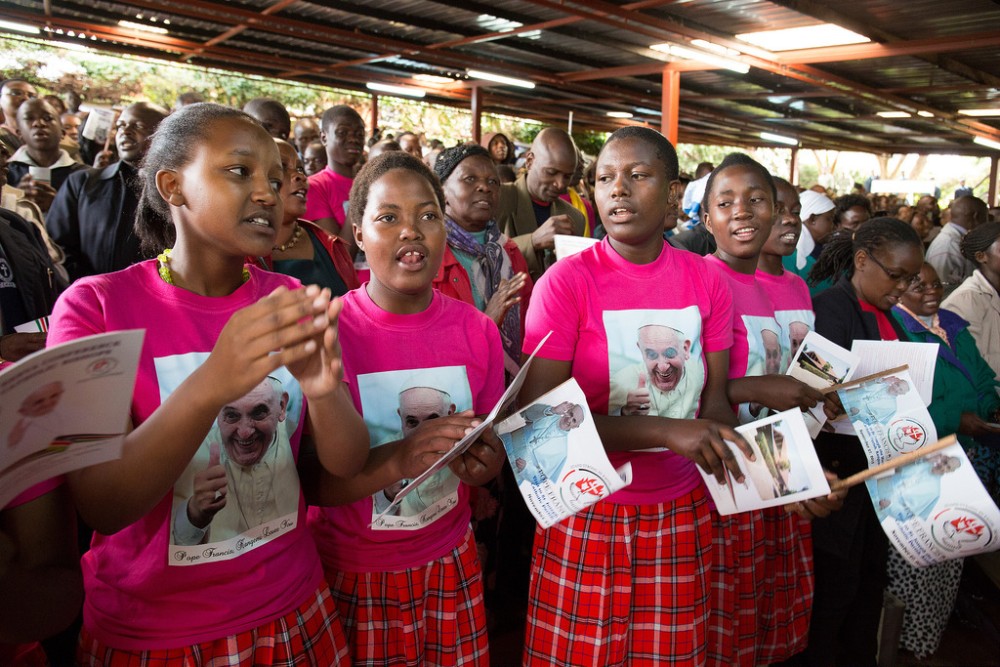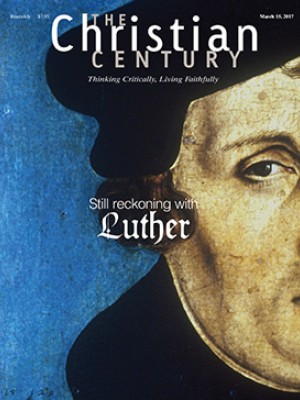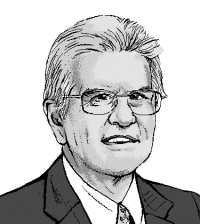The new Catholic homeland
Within a few decades, a third of all Catholics will live in Africa.

Little noticed by many of its American faithful, the Roman Catholic Church is going through one of the most significant eras of change in its long and eventful history. The transformation is being wrought neither by political conflict nor theological change, but rather by demographics—although these assuredly will have political and cultural consequences.
Within a few decades, up to a third of all Catholics will live on the African continent, which will then be the largest global center of Catholicism. At some point, the church’s leadership will have to acknowledge that vast presence.
The growth of Catholic Africa is an amazing phenomenon, and a very recent one. In 1900, the whole African continent had just a couple of million Catholics. The number grew to 130 million by the end of the century, and today it approaches 200 million. Just since 1980, the total number of African Catholics has grown by 238 percent. If current trends continue, as they show every sign of doing, then by the 2040s there will be some 460 million African Catholics, a number greater than the total world population of Catholics in 1950.
Read our latest issue or browse back issues.
By about 2030, we will mark a historic milestone when the number of Catholics in Africa will exceed the number for Europe, and a few years after that, Africa will overtake Latin America. Those impressive African figures are actually on the conservative side. Survey evidence of reported religious beliefs suggests that the African church is systematically undercounting its following, possibly by as much as 20 percent.
Within just a generation from now, a list of the ten nations with the largest Catholic populations will include several names where Catholicism was virtually new in 1900: African lands such as Nigeria, Uganda, Kenya, Tanzania, and the Democratic Republic of the Congo. Nor would such a list take account of the substantial numbers of migrants from such nations living in diaspora communities in Europe or the Americas.
Many denominations have found that their newer African members tend to be morally and socially conservative, and the Catholic Church is no exception. Some of the African church’s most important leaders include figures like Guinea’s Cardinal Robert Sarah, who frames global conflicts in apocalyptic terms. He has said that “what Nazi fascism and communism were in the 20th century, Western homosexual and abortion ideologies and Islamic fanaticism are today.” In his view, both those ideologies—Western liberal and Islamist—arise from demonic influence.
Not all prelates are so fiery, and many support progressive views on issues like climate change: South African Cardinal Wilfrid Napier has been outspoken on this theme. What unites African leaders, though, is a resolute defense of church tradition, commonly against the perceived danger of assaults from secularized Catholics in Europe or the United States. All the African prelates condemn abortion, and most would prohibit the use of condoms. Few are even on record for their views on same-sex marriage, as the issue is so far from the political agenda of most African nations apart from South Africa.
Of their nature, such conservative prelates do not wish to display anything but absolute loyalty to the papacy, but that does not mean they are willing to consider every liberal reform that the Vatican might suggest. That reluctance was obvious during the 2015 Synod on the Family held in Rome, which gave conservative Africans a startling new prominence in church debates. The synod sought to apply some of the principles of mercy and openness advocated by Pope Francis, in reforms that to non-Catholic eyes seem very mild. The Vatican made no gesture toward considering anything as radical as, say, ordaining gay priests or ending clerical celibacy, or even to discussing the notion of same-sex marriage. Instead, the synod heard proposals suggesting a generally more welcoming attitude to gay Catholics and possibly allowing divorced and remarried believers to receive communion. Even so, African prelates staunchly resisted compromise on both points. The resulting debates between conservatives and reformists acquired an ugly tone as Africans accused Europeans of imperialist racial attitudes, while Europeans implied that Africans showed backwardness.
Liberal anger was expressed by German Cardinal Walter Kasper, who urged that the church should accept the more accepting views of the “growing majority” on issues like divorce and remarriage, while ignoring the African and Asian reactionaries. Whatever we think of the particular issues at stake, a glance at the church’s overall statistics and growth rates should make Europeans very cautious about invoking the language of majority and minority. The views of the African church might well change over time, but the numerical power of that church is beyond question. The preparations for the 2015 synod of African Catholic leaders have been published in a book that takes its ambitious title from a phrase of Pope Paul VI: Christ’s New Homeland.
A version of this article appears in the March 15 print edition under the title “The Catholic surge in Africa.”







